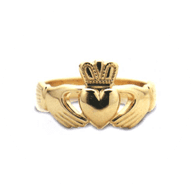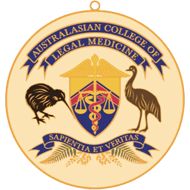Digital Rape - is it associated with evidence of trauma?
Posted by Dr Mike O'Connor
on 28 January 2014
Recently I was asked to provide medico-legal expert evidence in a case of digital sexual assault. It was pointed out to me by the Defence that one publication cited a detected genital injury rate after digital sexual assault of in excess of 80%.
However the American publication involved:
1. Colposcopic examination with tissue dyes such as toluidine blue (both of these techniques substantially increase the detection rate)
2. Short time periods before forensic examination (<72 hours aft...
However the American publication involved:
1. Colposcopic examination with tissue dyes such as toluidine blue (both of these techniques substantially increase the detection rate)
2. Short time periods before forensic examination (<72 hours aft...
Congenital unilateral absence of an ovary medicolegal case
Posted by Dr Mike O'Connor
on 28 January 2014
Recently I was asked to provide an expert opinion on the causation of a missing ovary discovered at a third laparoscopy. It was alleged by another expert witness that this must have been surgically removed at one of the 2 previous laparoscopies, both of which were brief procedures. The witness stated that in his experience congenital absence of one ovary had never occurred.
In fact there have been a number of case reports of just such congenital absence of only one ovary: in 1978...
| Posted in:Ovaries |
Cerebral Palsy and the National Disability Insurance Scheme
Posted by Dr Mike O'Connor
on 11 November 2013
Cerebral palsy affects two to 2.5 infants per thousand live births in Australia. It had been estimated that the prevalence of patients with cerebral palsy in Australia in 2007 was nearly 34,000 persons. According to an Access Economics Report in 2007 the cost of caring for each affected individual was $43,431 annually, amounting to a national cost of $1.47billion. This is 0.14 per cent of Gross Domestic Product.
The new Australian National Disability Insurance Scheme is s...
The new Australian National Disability Insurance Scheme is s...
| Posted in:Cerebral Palsy |
Laparoscopic Injuries
Posted by Dr Mike O'Connor
on 24 March 2013
Laparoscopic Injuries
Inserting a needle into the abdomen and peritoneal cavity for the purpose of instilling carbon dioxide gas in preparation for laparoscopy is essentially very safe because of the design of the Verres needle: once the resistance of the abdominal wall is overcome a sheath slides over the sharp needle to prevent it damaging bowel and other organs. The devices used to instil gas have pressure controls which limit the flow of gas under conditions of high pre...
| Posted in:Laparoscopic Injuries |
Potential Fetal Anomalies
Posted by Dr Mike O'Connor
on 3 March 2013
Potential Fetal Anomalies missed at the 19 week ultrasound
Fetal anomaly scans at about 19 weeks of gestation are often thought by patients to exclude all major fetal anomalies. However this is not the case: for example it has been noted that up to 50% of congenital heart malformations are missed (RADIUS Study) in this way. Another example of this was a Dutch study of over 5,000 patients scanned between 16 and 24 weeks. Those skilled sonologists and sonographers missed 10 m...
| Posted in:Ultrasound |








